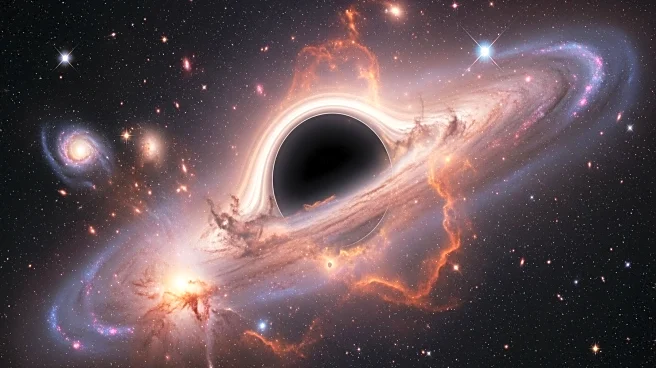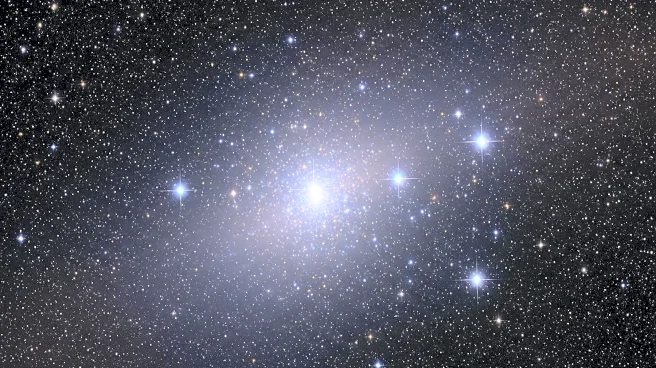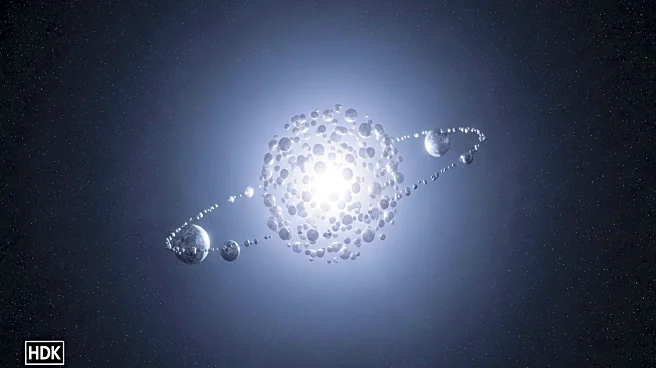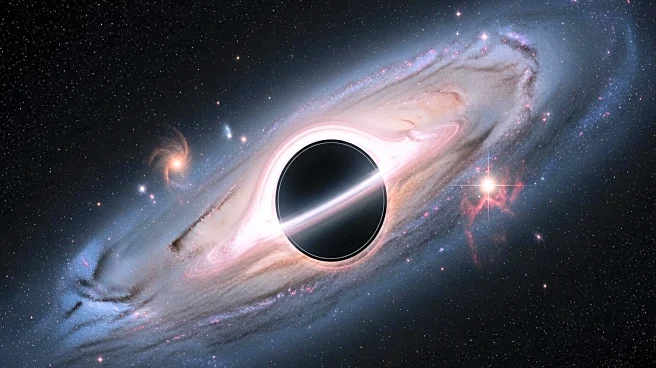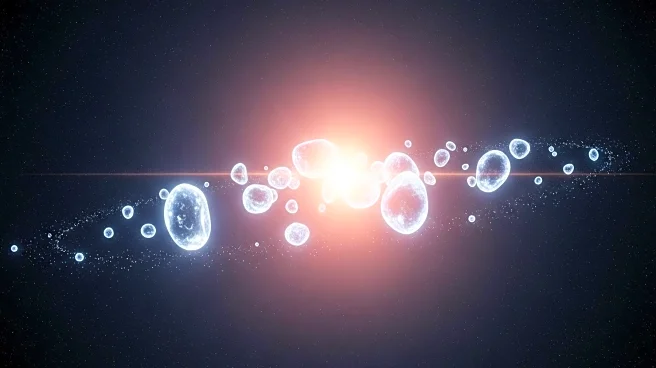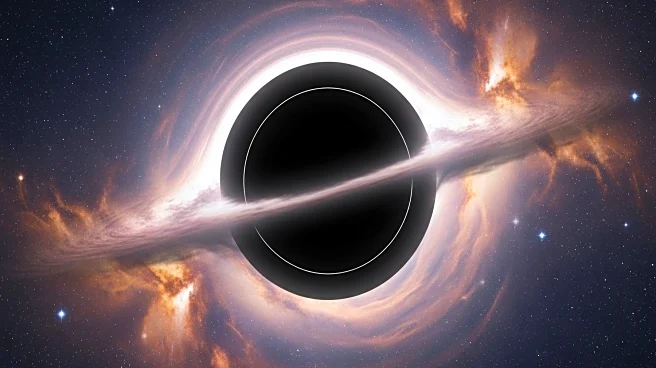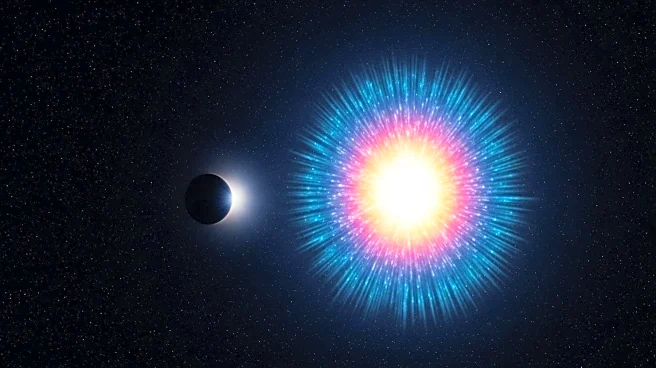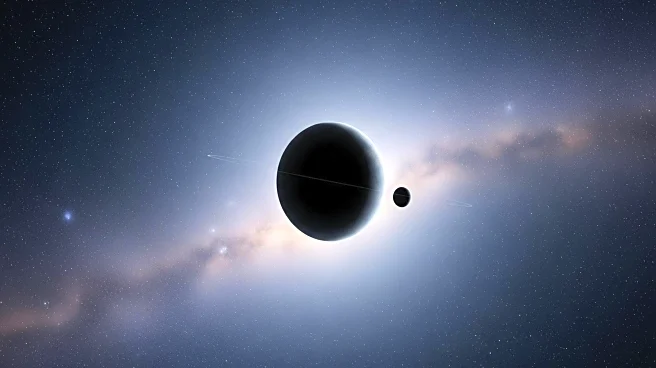What's Happening?
Recent research has revealed that the universe's first stars, traditionally believed to be massive, may have included lower-mass stars as well. This challenges previous assumptions about star formation in the early universe. Studies suggest that turbulence and molecular coolants in early gas clouds could have led to the formation of smaller stars. Helium hydride, the universe's first molecule, played a crucial role in cooling these gas clouds, enabling the formation of lower-mass stars. This discovery opens new avenues for exploring the origins of the cosmos and the processes that led to the formation of planets and life.
Why It's Important?
The findings have significant implications for our understanding of the universe's early days. If lower-mass stars formed alongside massive ones, some of these ancient stars may still exist, offering insights into the universe's formation and evolution. This challenges the notion that early stars were exclusively massive and suggests a more diverse range of star masses. The discovery highlights the complex interplay between chemistry and astrophysics in shaping the cosmos, potentially reshaping theories about the formation of galaxies and planetary systems.
What's Next?
Astronomers are now focused on identifying these ancient stars, which could reshape our understanding of the universe's early days. Ongoing observational efforts aim to discover these stars, despite their faintness. The research may lead to new models of star formation and influence future studies on the origins of the cosmos. As scientists delve deeper into these mysteries, the findings could prompt revisions in existing theories about the universe's formation and the processes that led to the development of complex structures.
Beyond the Headlines
The discovery raises intriguing questions about the role of molecular chemistry in star formation and the potential for diverse star masses in the early universe. It challenges existing paradigms and highlights the importance of interdisciplinary research in advancing our understanding of cosmic phenomena. The findings may also influence discussions about the origins of life and the conditions necessary for planetary formation.

